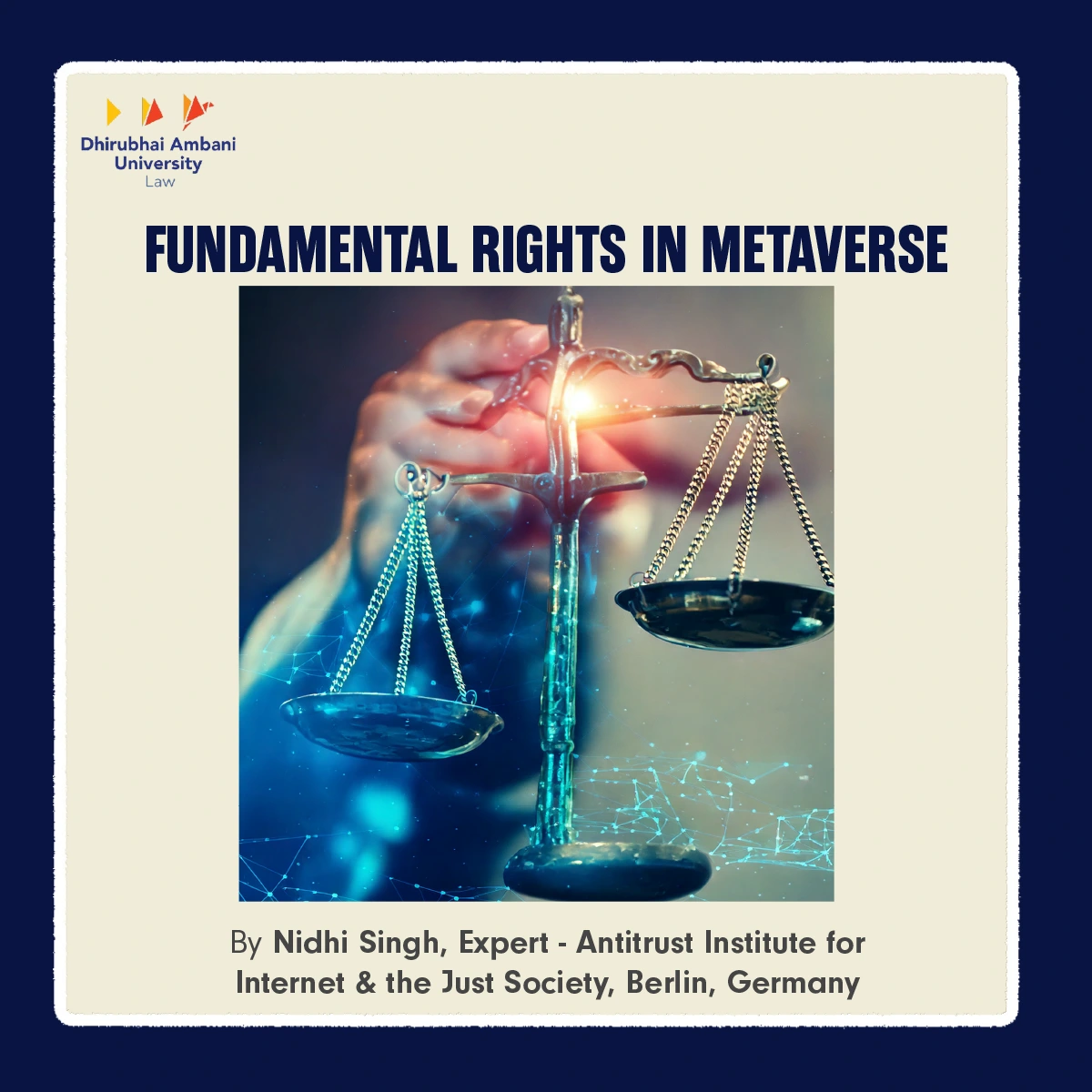
Nidhi Singh
Advocate on Record, Supreme Court of India and Non-Resident Fellow, Dhirubhai Ambani University School of Law, IndiaIntroduction
The metaverse is emerging as a defining feature of the 4th Industrial Revolution, with predictions that by 2026, a quarter of the global population could spend over an hour daily in immersive digital environments. With a projected market value exceeding $1 trillion by 2030, this convergence of virtual, augmented, and AI technologies is transforming the way we work, learn, socialise, and govern. Yet, its rapid evolution has outpaced the legal and ethical frameworks designed for the physical world. This short piece outlines key opportunities, risks, and the urgent need for principled regulation to ensure the metaverse remains a space that upholds fundamental rights and global public interest.
Opportunities
The metaverse offers transformative potential across multiple sectors. In education, immersive environments allow students to collaborate in virtual classrooms, explore historical simulations, and practice high-risk skills in safe virtual labs. In healthcare, applications include virtual consultations, rehabilitation therapies, surgical training, and remote diagnostics. Culture and tourism benefit through digital twins of cities and landmarks, while workplace innovation enables remote collaboration through virtual offices, showrooms, and global conferencing platforms. These advances promise greater inclusion, accessibility, and economic efficiency.
Risks and Emerging Harms
However, the immersive nature of the metaverse also presents significant risks. Reports of virtual sexual assault highlight the psychological harm that can mirror physical trauma. Financial crimes have proliferated as well, including phishing scams, fraudulent NFT sales, and asset manipulation across platforms. More alarmingly, privacy faces unprecedented challenges: VR/AR devices track intimate biometric data such as eye movement, heartbeat, and stress levels, creating vast datasets that can be exploited for profiling, manipulation, or surveillance. Without robust safeguards, users’ virtual interactions could be commodified or misused without consent.
Legal and Ethical Challenges
The legal vacuum within immersive digital spaces raises complex questions: Can virtual assaults be prosecuted under existing criminal laws? Who holds liability for avatar-based harm—the user, platform, or programmer? And in a borderless metaverse, which nation’s laws apply when crimes affect individuals across jurisdictions? The current legal infrastructure, built for physical environments, struggles to address such issues. Assault, for instance, requires physical contact under most laws (Valente 2024).
Moreover, enforcement mechanisms remain inadequate. Anonymous participation, cross-platform movement, and a lack of consistent governance frameworks inhibit accountability. This points to an urgent need for legal systems to evolve, perhaps recognizing virtual rights, AI agency, or even personhood for avatars in limited contexts.
Human Rights in the Virtual Realm
Fundamental human rights—privacy, dignity, freedom of expression, and non-discrimination—must be upheld within the metaverse just as in physical spaces. While human rights law is technically technology-neutral, the metaverse’s immersive architecture amplifies traditional concerns. Research from the Norwegian Human Rights Institution stresses that these rights are indivisible across physical and digital spaces, yet application remains inconsistent.
New concepts such as the right to digital identity, the right to be forgotten, and neurorights protecting brain data are gaining traction. As citizens increasingly depend on virtual platforms for education, employment, and healthcare, governments may soon face obligations to ensure equitable access to metaverse services—raising questions of digital inclusion as a human right.
Governance and Regulation
Current legal systems are poorly equipped to address harms occurring in immersive digital environments. Valente (2024) notes that conventional laws are often inapplicable, as they rely on tangible elements like physical bodies or crime scenes. A hybrid governance model—balancing decentralised technologies like blockchain with centralized oversight—may offer a viable path forward. Features could include:
- Verified digital identities to enhance accountability
- Cross-jurisdictional cooperation for investigating virtual crimes
- Smart contract enforcement mechanisms for metaverse arbitration
- Minimum global standards on privacy, biometric data use, and consent
While the internet provides a useful precedent, it cannot serve as a template. The metaverse’s unique experiential and participatory nature demands dedicated frameworks reflecting its novel risks and opportunities.
Conclusion and Recommendations
The metaverse stands as both a frontier of innovation and a stress test for our global governance architecture. It demands not only technological foresight but legal imagination. The international community must initiate dialogue on creating a Constitution for the Metaverse, rooted in established human rights principles yet adaptable to emerging challenges. We recommend:
- International coordination on standards and enforcement mechanisms.
- Recognition of digital rights, including those specific to avatars and biometric data.
- A blockchain-inspired governance model—similar to Proof of Work or Proof of Stake—can be adapted in the metaverse to discourage harmful behavior.
- Ethical frameworks guiding responsible innovation, including neurorights.
By acting now, we can shape the metaverse into a safe, inclusive, and rights-respecting environment—one that reflects the best of what humanity can offer in both physical and virtual worlds.
(This article is a summary of the talk presented at the 20th Internet Governance Forum, Norway. The author would like to thank Prof. Utkarsh Leo, University of Central Lancashire for his valuable inputs and his efforts in compiling the report)
